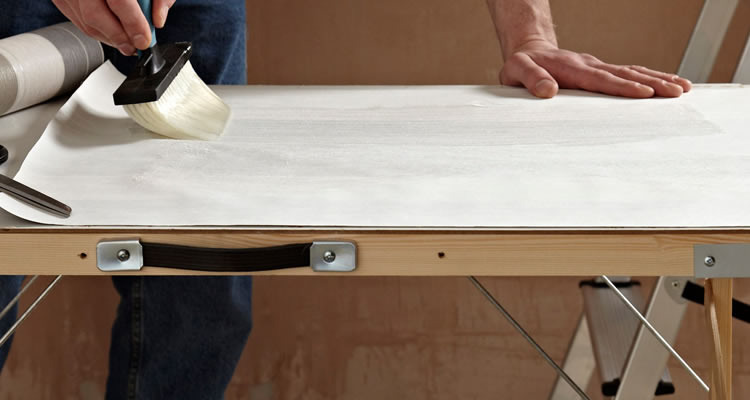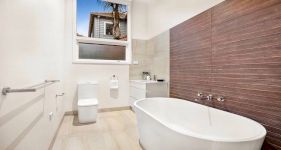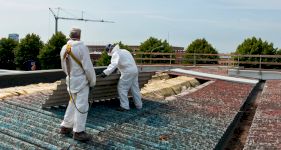Wallpaper Removal Cost
- The average cost of removing and hanging wallpaper is around £550.
- The job will take approximately 2 days to complete
- Find out what removing and hanging wallpaper costs in 2025 by type and style.
- How long the job should approximately take.
- Easily find a local painter and decorator through MyJobQuote.

£550
Table of Contents
How Much Does Wallpaper Removal Cost?
The average wallpaper removal cost in the UK is £300 to £600 per room. Prices you're quoted will mainly depend on the size of the room and the type of wallpaper that you want to have removed.
Most decorators charge £15 to £25 per hour, or a day rate of between £120 and £200, with small rooms usually taking a day to complete.
Removing stubborn or textured wallpaper, such as woodchip, is typically more expensive due to the extra time and effort. In these cases, woodchip wallpaper removal costs can rise to between £400 and £800 per room.
Wallpaper Removal Prices
Below is a breakdown of typical wallpaper removal costs when hiring a professional:
| Job Description | Average Cost | Duration |
|---|---|---|
| Remove wallpaper on a single wall | £80–£150 | 2–4 hours |
| Remove wallpaper in a single room (approx. 25m²) | £300–£600 | 1 day |
| Wallpaper removal in entire 3-bed semi-detached house (approx. 90–100m²) | £1,500–£3,000 | 5–7 days |
As this shows, wallpaper removal typically works out at around £12 to £30 per m². Straightforward rooms are at the lower end of this range, while larger or more awkward spaces are towards the higher end of the scale.
Wallpaper Removal with Redecorating
You may also want to consider the cost of wallpapering a room or the cost of painting, if you plan on redecorating after removal.
| Job Description | Average Cost | Duration |
|---|---|---|
| Wallpaper removal and painting in a single room (approx. 25m²) | £450–£750 | 2–3 days |
| Wallpaper removal and repapering in a single room (approx. 25m²) | £500–£900 | 2–3 days |
How is cork wallpaper fitted? Does it need any special skills or is it similar to other wall coverings?
Why Hire a Decorator?
While it might seem tempting to tackle wallpaper removal on your own to save money, DIY jobs can be time-consuming, physically demanding, and messy.
Without the right tools and experience, it’s easy to damage walls, struggle with stubborn wallpapers like woodchip, or end up with uneven surfaces that will require additional repairs later.
Common Things That Go Wrong With DIY:
- Plaster that gets scored or pulled off.
- Painted or vinyl paper that won’t soften.
- Old damp or mould that shows up once the paper is off.
- Holding a heavy steamer against the wall for hours can get tiring.
- Sockets getting damaged with steam.
- Not having the correct or best tools for the job.
- The job costing more money in the long run due to mistakes being made.
Get Fast Quotes
For a guaranteed smooth finish without the hassle, you can get multiple free quotes from local decorators using MyJobQuote. It's fast, no-hassle, and there is no obligation to book.
Factors Impacting Wallpaper Removal Costs
There are several factors that can influence the overall cost of removing wallpaper in your home. Understanding these can help you plan your budget and avoid any awkward surprises:
- Type of wallpaper: Thick, textured, or stubborn wallpapers like woodchip require more time and effort, increasing costs.
- Number of layers: Some walls may have multiple layers of wallpaper over one another. Each of these must be removed. The more layers the longer the job will take.
- Painted wallpaper: If your wallpaper has been painted over, some removal techniques such as soaking and scraping won't work as well. The paint effectively seals the wallpaper making it more labour intensive to remove.
- Room size and layout: Larger rooms take longer to strip, leading to higher labour fees. The same goes for rooms with awkward shapes, coves, or bay windows. The more nooks and crannies the room has, the more it will cost.
- Number of walls: Feature walls are cheaper to remove than full-room coverage.
- Condition of walls: Damaged walls may need plastering or skimming after removal, adding to the total cost.
- Accessibility: High ceilings, staircases, or additional fixtures and fittings can make the job more difficult.
- DIY vs professional: Doing it yourself can save on labour, but hiring a professional ensures quicker, cleaner results and proper wall preparation for painting or redecorating.
- Method of removal: Steaming is often more expensive than soaking and scraping, while dry scraping is often the cheapest method of removal. The type of wall paper you have may dictate which method is used to remove it.
- Mould treatments: If any of the walls in your house suffer from mould or damp, then you'll usually need to have them treated before you can redecorate
- Location: Regional differences in labour costs can affect pricing.
Woodchip Wallpaper Removal Cost
Removing woodchip wallpaper can be more labour-intensive than standard wallpaper because of its thick texture and due to often being painted. This means the costs to remove woodchip wallpaper are usually higher than for smooth or vinyl wallpapers.
On average, professional decorators charge between £15 and £25 per hour for wallpaper removal, or a day rate of £120 to £200, but a single room with woodchip wallpaper may cost around £400 to £800 to remove, depending on the room size, wall condition, and accessibility.
| Job Description | Average Cost | Duration |
|---|---|---|
| Remove woodchip wallpaper on a single wall | £100 – £180 | 2–4 hours |
| Remove woodchip wallpaper in a single room (approx. 25m²) | £400 – £800 | 1–2 days |
| Remove woodchip wallpaper in entire 3-bed semi-detached house (approx. 90–100m²) | £2,000 – £3,500 | 5–7 days |
What's Involved in Wallpaper Removal
In this section, we've put together an overview of the main methods that might by a professional to remove wallpaper.
But keep in mind that all these methods require significant time and effort. For the best results, it’s worth finding and hiring a local decorator.
Dry stripping
- Dry check — Your decorator will lift a corner of the wallpaper to see if it will come away in large sections without soaking.
- Change approach — If it tears into small pieces or pulls at the surface, they’ll move straight to a different removal method.
Peel vinyl, then soak the backing
- Remove top — On vinyl and moisture resistant wallpapers, the decorator takes off the vinyl/top layer first so the backing is exposed.
- Soak backing — Once the backing is visible, it is soaked with warm water or stripping solution so the paste can soften.
- Scrape backing — The softened backing is scraped off carefully so the wall isn’t damaged.
Soaking and scraping
This method is used on smooth textured lightweight wallpapers that haven't been painted over.
- Soak paper — The decorator saturates the wallpaper with a sponge and warm water (sometimes mixed with washing-up liquid) to dissolve the paste before scraping it off.
- Test area — They test a section of wall to see how easy it is to remove. If the wallpaper comes away cleanly, then this method is the most efficient.
- Note challenges — They watch for potential challenges, including uneven walls where the scraper might actually dig in and damage the wall, vinyl and moisture resistant wallpapers, and areas where there's multiple layers or painted wallpaper.
- Avoid wasted effort — Where those issues are present, the decorator carries on with a more suitable method rather than you spending hours of frustrating work with minimal results.
Scoring and steaming
This is the method they use for removing woodchip and other stubborn wallpapers because it is the most effective.
- Score and steam — The decorator uses a wallpaper steamer to force hot steam through perforations made in the paper with a scoring tool, dissolving the glue from behind.
- Protect plasterboard — They are careful not to apply too much steam to one spot, as it can end up softening the plasterboard underneath.
Chemical strippers and solvents
This is used on standard wallpapers where water isn't quite strong enough.
- Apply solution — The decorator applies a chemical solution to the wall to break down the wallpaper adhesive more effectively than water alone.
- Ventilation — Good ventilation is allowed for.
- Residue is washed off — The sticky residue left by the stripper or solvent is completely washed off the wall before you paint or hang new wallpaper.
Checklist: Getting Wallpaper Professionally Removed
Whether you're looking for someone to remove your old wallpaper or a complete removal and redecorating, there are a number of factors you can consider to ensure the job goes smoothly.
Consider these points before hiring a painter and decorator to remove your old wallpaper.
- Are they experienced? Check the contractor has experience with wallpaper removal and redecorating, especially with the type of wallpaper you need removed, especially for woodchip or textured wallpaper. Ask to see examples of previous work.
- Have they given you a detailed quote? Ask for a detailed quote covering labour, materials, and any wall preparation costs.
- Are they insured? Decorators typically have public liability insurance and must have employers’ liability insurance if they have people working for them.
- Can they complete any extra work? Verify whether they can also handle painting or repapering after removal if needed.
- Do they provide a contract? Agree on a written contract specifying the work scope, total cost, and payment schedule.
- Do they have positive reviews? Check their MyJobQuote profile and see what other homeowners are saying about their work.
It's always worth speaking with a few different contractors and comparing their prices before making a hiring decision.
Use MyJobQuote to get multiple quotes from local painter and decorators, for free, with no obligation to go ahead!










